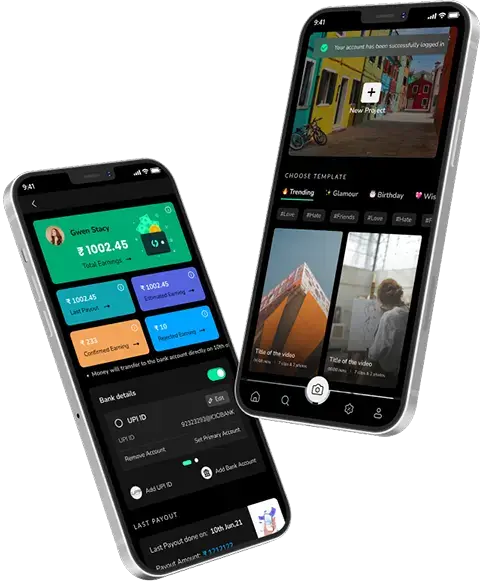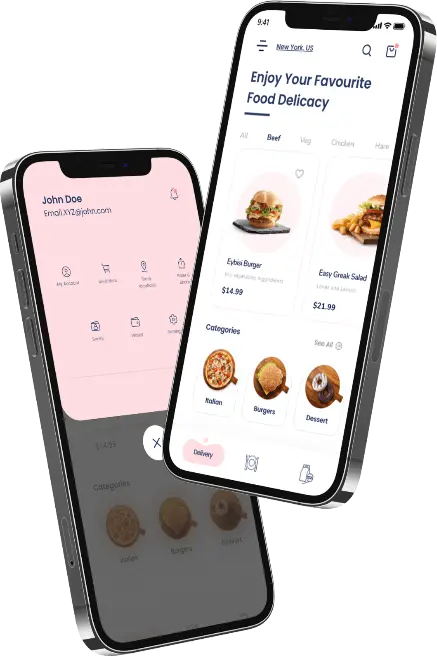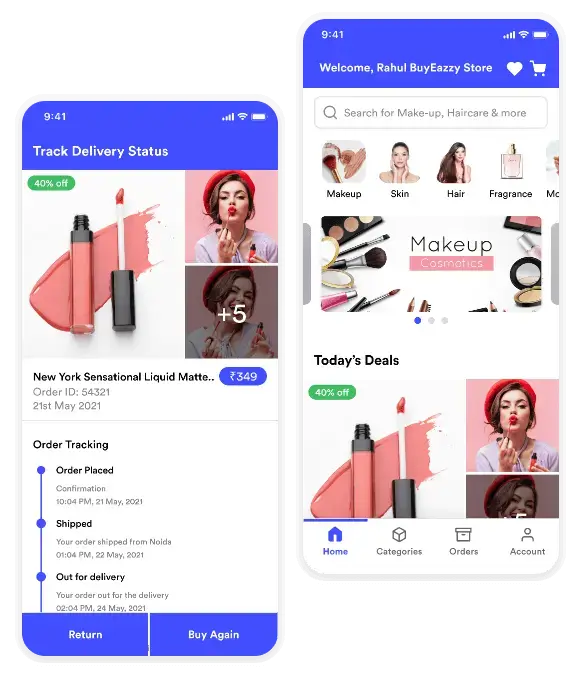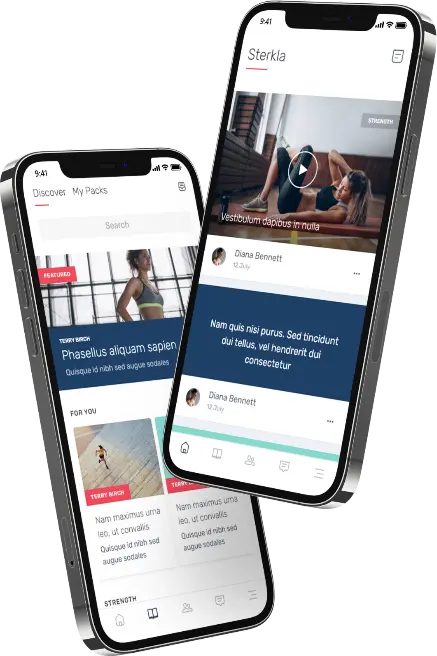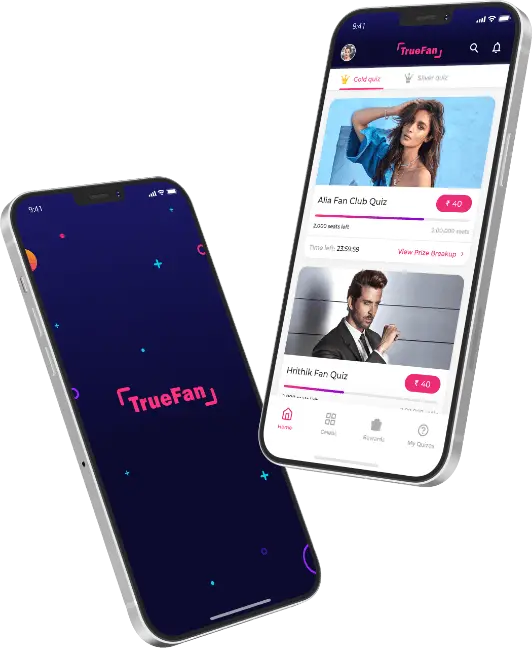Augmented reality is now a common tool for assisting in surgeries and demoing products. AR is a virtual layer that adds an interactive layer to our environment, making it possible for immersive experiences.
Augmented reality allows us to claim all the space around us for advertising, fitness instruction, entertainment, commerce, and everything else we can imagine.
It’s no surprise that AR is a hot topic among founders. They are looking for innovative ways to create augmented reality apps that add value.
But, how to get started? AR application development companies are a way to go! But first, let’s understand the basics of the emerging technology.
Also Read – Augmented Reality App Development is All Set to Rule 2023: This Guide Will Help!
What’s Augmented Reality?
Let’s learn what augmented reality technology means before discussing how to find the perfect team.
Augmented reality is a bridge between virtual data and the real world. These are the three characteristics it must possess:
Real-world data and virtual data can be combined in real-time
Interactive in real-time (A change on the real plane will require an adjustment to the virtual data).
We can “see” the world around and in 3D because we live in three-dimensional space.
Types of Augmented Reality Apps
Many options for AR application development companies depend on your business goals. Let’s look at some of the most common AR solutions.
1. Augmented Reality App Based on Markers
AR applications based on image recognition (or image markers) are used. The application overlays digital information onto the marker once it recognizes the object or image.
These solutions can be used as markers with 3D and non-3D objects such as QR codes.
2. Augmented Reality Based on Location
The most popular implementation of augmented truth is location-based AR. This solution, called markerless AR, creates AR objects based on the current location. These apps do not use markers. Instead, they use GPS, accelerometers, compasses, and other location detectors to create AR objects based on the current location. Pokemon Go best illustrates this type of app.
3. Projection Augmented Reality
These applications rely on visual and audio odometry. In addition, these applications use complex algorithms that collect data from multiple sensors to locate objects and perform the appropriate actions.
Because it can reveal hidden objects using built-in cameras, Projection AR can also be used in car parking systems. In addition, this technology can be used by engineers and architects to study the environment better for building construction.
4. Augmented Reality Based on Superimposition
Superimposition applications are used in medicine and healthcare. This technology is self-explanatory. An AR object is added to an AR image that has been processed and recognized.
Tips for Developing an AR Mobile App
Here the the tips to keep in mind before you reach out to efficient AR application development companies:
1. Market Research
It is crucial to do your research to make sure you are making the right decisions and putting your money where it matters most. Market research includes understanding the types of apps available on the app store and their features and functionality. In addition, pay special attention to customer feedback and market trends. This will allow you to identify your AR app’s potential value and demand and help you determine your project’s direction.
2. Define your requirements
After you clearly understand your market and targets, it’s time to set the goals and requirements for your AR app. This should contain a description of the features and functionality you are focusing on, as well as the project’s overall vision and user experience. A roadmap will help you plan the development of your AR app and ensure it meets your expectations.
3. Hiring a Professional Company
Building an AR app requires technical skills and expertise. To get the best results, working with AR application development companies with experience in this field is recommended. A company with a track record of success, a portfolio of successful projects, and a solid team of developers is a good choice.
4. Choose a Development Approach and Technologies
Before you create an Augmented Reality app, there are many options and technologies available. Each has its advantages and limitations. There are several options: use a browser-based AR platform or build a native app. Or, you can choose to combine both. You will also need to consider the programming languages and tools you want to use, as well as the hardware requirements for the app.
5. Choose an AR app type
There are many different types of AR apps that you can choose from. You can ensure your project is fun, engaging, and productive by carefully considering which AR app is best for you and your audience.
6. Select an SDK
An SDK (Software Development Kit) is a collection of resources and tools that allow you to start an Augmented Reality app creator process on platforms such as iOS or Android. It is important to choose the right SDK for your AR app. This will ensure that it is reliable, performant, and can deliver the required functionality and features.
7. Make a mockup
It is a good idea to create a mockup of your app or prototype before you start the actual development process. This will allow you to refine and test your ideas. A mockup is a simplified version or prototype of your app. It will enable you to visualize the user experience and help you identify any potential problems. You can create an AR app mockup in many ways, from wireframes to interactive models to simple wireframes. For example, you can use design tools like Sketch and Adobe XD or specialized Augmented Reality prototyping tools like InVision AR and Marvel AR. While a simple wireframe can be enough to test basic concepts and user flows, a more complex interactive model might be required to test specific features and interactions.
8. Begin AR app development
Now it’s time to create your AR app. This process will include designing and building various components and features and integrating data and assets. Collaboration and effective communication are critical to a successful development project. Establish clear communication lines with your development team, and be ready to share thoughts and discuss progress throughout the process.
9. Check your app
You can identify and fix bugs or issues that could impact the performance or quality of your app by conducting thorough testing. You should use multiple testing methods.
– Functional Testing: This test verifies that the app works as expected and that all functionality works properly.
– Compatibility testing: This type verifies that the app works with different devices, platforms, operating systems, and operating systems.
– Usability Testing: This type assesses the user experience and usability, identifying areas that need improvement or user frustration. 0. Get your AR App Released
After creating and polishing your AR app, it is time to launch and promote it to a large audience to drive adoption. Launching your app involves submitting it to the appropriate app store (such Google Play or App Store) and fulfilling any approvals or requirements.
How do you choose an augmented reality app?
Your digital strategy includes an AR application. However, you don’t have the resources or the expertise to make it a reality. This blog post will guide your search for top-notch AR application development companies.
1. Define your AR project
A clearly defined AR project plan can make communicating and negotiating with potential development partners easier.
You can increase your chances of finding a competent and compatible developer if you plan well. In addition, augmented reality app development project results will also be better if you do this.
If you prefer to work with your development partner, we suggest having at least a few videos or links as a reference to help you get started. In addition, AR developers often offer ideas, inspiration, and other examples to assist with the creative process.
2. Cost estimation x budget
Budget discussions should be started early in the AR app planning phase. However, it is in the development phase that things move from rough estimates to the actual deal.
Different developers have different pricing, just like everything else. One thing you can be certain of is:
AR apps are just like other types of apps in that they come with a wide range of development costs.
Let your potential development partners know if you have a budget. They can then tell you what is possible within that budget. If your budget is not a constraint for your project, you can simply tell the developer what you need to get a price quote.
3. Expertise in the vertical market
Perhaps your AR app is used in a marketing campaign. Or it may be the next big game experience. These experiences may differ even though they share the same technical background.
You can review candidates’ portfolios and search the app store to download any other projects they’ve created. Then, analyze your findings to determine if their technology and quality standards match your requirements.
However, experience in a particular area is not a guarantee of success. However, it could indicate that the quality of their projects in all categories is good.
Talk openly to the candidates and ask them how they feel about the project. Then, use your best judgment.
It doesn’t matter what app category you choose, but confirming that your AR developer candidate has experience using augmented reality technology is important.
4. Augmented reality technology – Experience the difference
AR development requires additional skills beyond traditional app creation.
It is important to choose an AR developer partner with AR technology experience. This will avoid any negative surprises in AR app results.
Ask for examples of their augmented reality projects. Also, inquire about their AR tools and how many devices they are compatible with.
5. The location of the app developer
You can hire locally, though, with today’s globalized communication facilities. Sometimes, the best place to find the right fit for your project may be halfway around the world. It doesn’t matter how far it is; if it seems the right fit, go for it.
6. Reliability
The search for an AR partner can seem daunting to the unguided. But we can help.
We are AR technology providers aiming to offer the best AR tools. However, we don’t develop apps.
How can Augmented Reality be used in different industries?
AR technology can offer exciting business solutions. Although its widespread use in large companies and industry will take several years, you should start thinking about how to implement it now. Let’s find out why.
1. eCommerce
This technology is being used in eCommerce and retail. There are many examples, including Fitle, an IKEA app, and Loreal. AR is already being used in eCommerce to improve the shopping experience. With the COVID-19 pandemic, the technology will likely gain more traction in eCommerce. These apps allow customers to test clothing and make-up and see how furniture will look inside their homes.
2. Healthcare
There are many applications of artificial intelligence in medicine and healthcare. For example, augmented reality tools are used in education to train students and perform surgeries and other procedures.
Microsoft HoloLens provides doctors with detailed anatomy information to aid in better surgery, tumor identification, blood flow visualization, and other tasks.
3. Tourism
Tourism and traveling are other areas of application. For example, tourists could experience historical events through their visits to certain places rather than reading about them.
4. Entertainment, games
The entertainment industry is the most promising for augmented reality app design. These solutions could offer a new experience, allowing users to interact with virtual objects in real life. The most successful AR game is Pokemon Go, which has generated over four billion dollars in revenue. However, it is yet to be seen whether any other AR games can surpass this.
5. Education
Education is a great place to start if you want to create an augmented reality app. Augmented reality apps for education enable students to view virtual objects in their learning environment.
One possible implementation is to place unique markers in books that trigger the display and playback of multimedia content.
6. Architecture and real estate
AR technology can also be used in this industry. These applications allow specialists to see how their buildings will fit in with the surrounding environment and showcase their projects to investors and clients.
7. Military
U.S. Air Force Research Laboratory was the first to develop augmented reality applications for military purposes. As a result, special goggles are available today to assist the military in ground navigation.
Conclusion
To deliver an engaging experience for your customers, you must select the right AR Application Development companies. These tips will help you make the right choice and guide you to find the right partners.
We are one of the top Augmented Reality App Development company and have all the necessary skills to be considered the best AR App Developers. The remarkable quality of our services is evident in the testimonials from clients.
Book a consultation with one of our experts to learn how our services can improve your business.
Post Views: 1,631




 SA
SA
 KW
KW
 IE
IE AU
AU UAE
UAE UK
UK USA
USA
 CA
CA DE
DE
 QA
QA ZA
ZA
 BH
BH NL
NL
 MU
MU FR
FR











